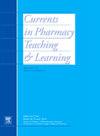药学博士课程衔接课程综述
IF 1.4
Q3 EDUCATION, SCIENTIFIC DISCIPLINES
引用次数: 0
摘要
目的药学博士课程的衔接课程可以达到多种目的,包括但不限于缩小知识差距,加强和更新基础科学材料,模仿学生在课堂上的活动,保护课堂时间,培养自主学习,并确保所有学生都有类似的基线知识,可以预测学习成绩。这篇综述试图总结内容,交付和评估方法使用的桥接方案提供了迄今为止在文献中描述的药学博士课程。利用药学博士课程的衔接课程和相关术语,对各种教育资源进行了详细的文献检索。数学是一个典型的桥梁课程的共同内容。讨论了利用药学大学入学考试(PCAT)定量成分、数学预试、基础数学技能测试(BMST)、福格蒂数学自信量表、逻辑思维测试(TOLT)、知识空间评估与学习(ALEKS)等测试来评估学生的数学先验知识。本综述旨在总结各种各样的选择,就药学博士课程提供的衔接课程的内容、交付和评估而言。桥接方式的选择应与特定大学/学院课程的性质和内容重点相一致。本文章由计算机程序翻译,如有差异,请以英文原文为准。
A review of bridging courses in doctor of pharmacy programs
Objectives
Bridging courses in Doctor of Pharmacy program can serve various purposes including but not limited to closing the knowledge gaps, reinforcing and refreshing foundational scientific material, mimicking the activities students will do in classroom, protecting in-class time, fostering self-directed learning, and ensuring all students have similar baseline knowledge that can forecast academic performance. This review attempts to summarize the content, delivery and assessment methods used in bridging programs offered in Doctor of Pharmacy programs described thus far in the literature.
Findings
A detailed literature search of various educational resources was conducted using bridging programs in Doctor of Pharmacy program and related terms. Mathematics was found to be a common content in a typical bridging program. Assessment of prior knowledge of math in students using tests such as quantitative component of Pharmacy College Admission Test (PCAT), math pretest, Basic Math Skills Test (BMST), Fogerty Math Confidence Scale, Test of logical thinking (TOLT), Assessment and Learning in Knowledge Spaces (ALEKS) etc. are discussed.
Summary
This review intends to summarize the wide variety of options that are available as far as the content, delivery and assessment of bridging programs offered in a Doctor of Pharmacy program. The choice of bridging modality should align with the nature and content emphasis of a particular university/college curriculum.
求助全文
通过发布文献求助,成功后即可免费获取论文全文。
去求助
来源期刊

Currents in Pharmacy Teaching and Learning
EDUCATION, SCIENTIFIC DISCIPLINES-
CiteScore
2.10
自引率
16.70%
发文量
192
 求助内容:
求助内容: 应助结果提醒方式:
应助结果提醒方式:


